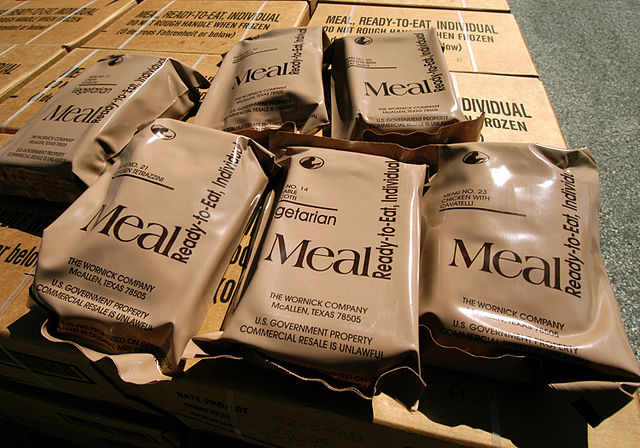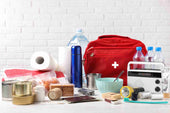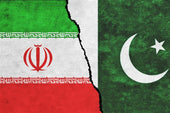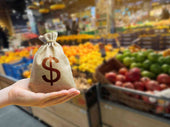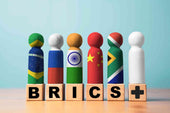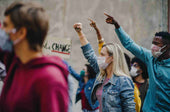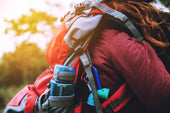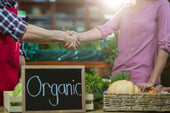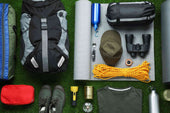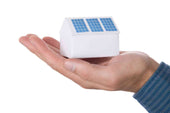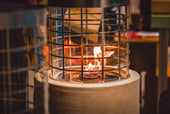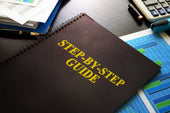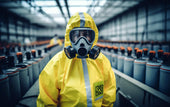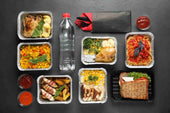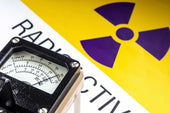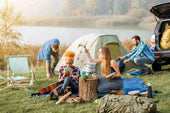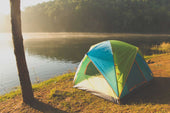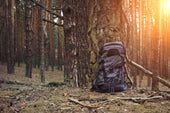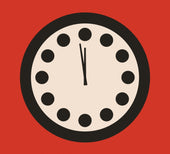MREs, or 'Meals Ready to Eat,' are some of the most significant innovations in our lives today.
Life is unpredictable. You can never guess the future; your stored food will deplete one day.
Today's generation often experiences natural and artificial calamities for various reasons. These events can put our lives in danger, causing trauma, property destruction, and even the death of a loved one.
Proper preparation is a must to prevent unpredictable events. One essential thing every home must have is an MRE, or meals ready to eat.
Our popular MRE products are from MRE STAR - Military Spec MRE MEALS.
Understanding What MREs Are
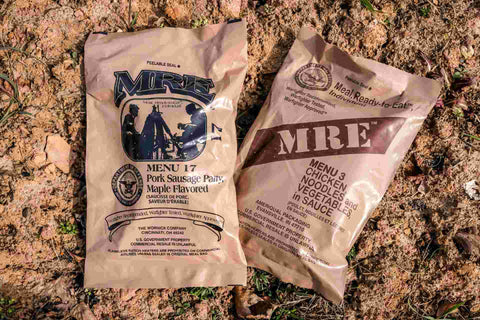
MREs, or Meals Ready to Eat, are the primary food rations of the Armed Forces, especially in the United States.
According to the U.S. Army, MRE originated from K-rations and C-rations during World War II. In the 1980s, the Army used MREs during the Korean and Vietnam wars and still does today.
According to the U.S. Army, the idea of MREs can be traced back to the government's need to feed the entire battalion of an army during wartime. MREs are deployed in areas with minimal or no food. They might die of famine rather than of wounds during the battle. The authorities are responsible.
Thus, they devised a plan to address this problem. The government researched techniques to feed armies with nutritious and adequate food. They collaborated with scientists and nutritionists to process raw food and make it practical.
These food packs are lightweight, ready to eat, and last for many years. In the long run, several companies began producing MREs for civilians, which can be distributed during disasters.
Although officials have questioned the use of emergency food packs since the contents are specially made for the army, the welfare of the people outweighs the controversy.
What is the shelf life of an MRE?
MRE has shelf-stable, ready-to-eat meals and elements that are appetizing in the field when packaged in the factory. Ensure the MRE follows USDA-established standards for commercially sterile, moisture—and oxygen-controlled food products. This method is best for preserving packaged foods.
All MRE ENTRÉE pouches are heat-processed to kill bacteria and inactivate chemicals. This process prevents microbes from entering the sterile food pouch, which doesn't spoil.
The package's other components (bakery and other snack items) are engineered and packaged in sealed, multilayered packaging to prevent the food products from excessive exposure to moisture and oxygen, thus ensuring an extended shelf life.
The above information allows MRE to give a shelf life of three years at 80°F (27°C) or six months at 100°F (38°C). Ideal storage conditions are essential to support the guaranteed shelf life, which may last up to five years.
Can you freeze an MRE pouch?
Freezing an MRE retort pouch will not spoil the food inside, yet frequent freezing increases the possibility that the pouch layer will flop. The pouches are designed to withstand 1,000 flexes, yet frequent freezing increases the failure rate by a small percentage.
What is inside a typical MRE meal kit?
Every complete MRE kit offers balanced nourishment with a variety of food components. Compositions range from 500 to 3000+ calories per meal. MRE components include entrees and side dishes, bread variants, snacks, sweets, drinks, and other control packs. Most MREs come in a case stuffed with 6 or 12 meals.
What do MREs taste like?
Taste is subjective, and you will get various answers depending on whom you talk with. You may like canned goods, or you may not.
Many individuals feel that MREs are comparable to or worse than canned food. MREs are beneficial, and some individuals appreciate them enough to eat them consistently when they need a quick meal for lunch or dinner.
MREs are intended to be home-cooked meals. They are designed to last. While home-cooked meals will not last more than seven days, MREs can last five years or more and are generally acceptable.
Are MREs dehydrated or freeze-dried?
No, MREs are entirely different. Unlike dehydrated or freeze-dried food, which both need water to restore their moisture, MREs are precooked "in the pouch" and, like canned food items, preserve their full moisture with a significantly longer shelf-life.
What's in an MRE

First, these foods are not tasty but are almost complete with nutrients. The package contains the following:
- Entree: This is the main course of MRE. Examples of this are pasta and meat stew.
- Side dish: It contains various choices such as corn, rice, fruit, mashed potatoes, and others.
- Spread: Like cheese spread, jelly, or peanut butter.
- Bread or crackers
- Dessert: Cakes, cookies, or any sweet pastries
- Candies
- Seasoning: Hot sauce
- Flameless Ration Heater
- Beverages: Coffee, milk, chocolate, or tea
- Accessories: Creamer, salt, pepper, sugar, spoon, and tissue
Difference between Civilian and Military MRE
Initial MRE production was geared toward the military. However, businesses have started making MREs for civilian consumption since 2000.
MREs are sold in boxes and bulk, providing enough food for one person to last for several months or possibly an entire year.
In addition, it has a 5-year shelf life, which encourages consumers to invest in it. The following reasons led to the development of civilian MREs:
- Emergency - with major catastrophes occurring periodically, MREs ensure you always have access to food, even during a power outage or when your local grocery store's stock runs out.
- Camping, hiking, and hunting involve walking long distances. MREs are ideal for satisfying your hunger, especially if you don't want to carry heavy luggage to your destination.
There have been discussions on whether civilian MREs are a better choice than military MREs due to the rise in demand for them. And if you want to buy them, below are some of the reasons for choosing civilian MREs over military MREs:
1. Quality—When you order civilian MREs, you will receive high-quality food. If a store has menu labels, you can get the menu you want directly from the vendors.
2. Source- Civilian MRE sources are registered with the state and given regulatory approval. You are well aware of the origin of your civilian MRE cases.
3. Security—Because civilian MREs allow you to choose your menu, you know exactly what is in the food packets. This protects you from the dangers of food poisoning and consuming unhealthy food.
4. Safe - You can be confident that civilian MREs are authentic and not imitations, making them much safer than military MREs. Reliable vendors offer civilian MREs, which can be purchased in physical locations.
Civilian MREs
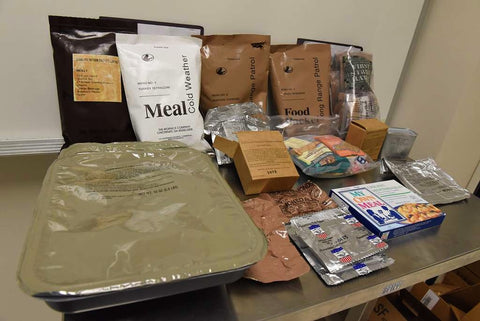
Years ago, civilian MREs had fewer food choices than military MREs, with only 12 meals available per case. However, civilian MREs have evolved.
For one, the supplies of civilian MREs are readily available in the market. You can buy it at any legitimate dealer. Some of the Meal Kit Supply items include MREs, Sure-Paks, Wornick Eversafe, MREStar, and Ameriqual APack. They store and transport each MRE properly. These sites can provide you with all the information regarding the MRE and ensure your eating is always safe.
In addition, civilian MREs are fresher, flatter, and wider, and can be packed in your bags.
Civilian MREs cost around $75 per case, more than the $50 to $60 per case of military MREs. However, you can be assured of their quality from reliable vendors.
On the other hand, civilian MREs only offer part of what you've paid for. Sometimes, they must be appropriately marked and not have a flameless heater, especially on private labels. In addition, unlike military MREs, they have a shorter shelf life.
Menus and Accessories of Civilian MRE
Some civilian MREs contain content similar to military MREs, including sides, entrees, desserts, and crackers.
However, the spread and the dessert can be different. Civilian MREs also include a spoon and napkin similar to the army's.
On the other hand, some packages don't include a flameless heater to heat the meal. The Soprano Sure-Pak, a civilian MRE, includes 12 individual meals of 6 different menus.
The example is as follows:
Menu 1 (1,230 calories)
- Chicken Pesto Pasta-420 calories
- Crackers-180 calories
- Clam Chowder-150 calories
- Grape Jelly-70 calories
- Oatmeal Cookie-280 calories
- Lemon-Lime Beverage Base-130 calories
- Instant Coffee-0 calorie
Menu 2 (1,070 calories)
- Refried Beans-180 calories
- Veggie Burger in BBQ Sauce-260 calories
- Raspberry White Chip Cookie-250 calories
- Crackers-180 calories
- Apple Jelly-70 calories
- Lemon-Lime Beverage Base-130 calories
- Coffee-o calorie
Menu 3-(970 calories)
- Chicken with Salsa-160 calories
- Grape Jelly-70 calories
- Crackers-180 calories
- Clam Chowder-150 calories
- Cookies with Pan Coated Chocolate Disks-280 calories
- Lemon-Lime Beverage Base-130 calories
- Instant Coffee-o calorie
Menu 4-(980 calories)
- Apple Maple Oatmeal-200 calories
- Grape Jelly-70 calories
- Crackers-180 calories
- Apple Pieces in Spiced Sauce-150 calories
- Raspberry White Chip Cookie-250 calories
- Tropical Punch Beverage Base-130 calories
- Instant Coffee-o calorie
Menu 5-(1,010 calories)
- Chili and Macaroni-240 calories
- Raspberry Applesauce-110 calories
- Grape Jelly-70 calories
- Crackers-180 calories
- Oatmeal Cookie-280 calories
- Tropical Punch Beverage Base-130 calories
- Instant Coffee-o calorie
Menu 6-(1,090 calories)
- Maple Sausage-240 calories
- Hash Browns with Bacon-220 calories
- Grape Jelly-70 calories
- Crackers-180 calories
- Raspberry White Chip Cookie-250 calories
- Tropical Punch Beverage Base-130 calories
- Instant Coffee-o calorie
Military MREs

Meanwhile, the U.S. government does not allow the commercial sale of military MREs. Although they contain more meals than civilian MREs, they can be obtained only in the military.
On the other hand, military MREs have stronger overall packaging. Unlike civilian MREs, it contains utensils, sides, heaters, condiments, and complete meals.
Years ago, a military MRE could last up to 130 months when stored below 60 degrees Fahrenheit. Now, its storage life can last up to 60 months.
Despite their benefits, military MREs are indeed harder to find. They are also difficult to store, and their shelf life decreases as the temperature increases.
Menus and Accessories of Military MRE
According to MRE Info, here are some sample menus for the Military MREs. This is based on the 2016 menu, but they also have menus from 1985 to 2016.
Menu 1
Chili with beans, cornbread, crackers, cheddar cheese spread, cheese snack, and carbohydrate-fortified drink.
Menu 2
Chicken with vegetables and egg noodles, wet-packed fruits, jelly and jam, peanut butter, crackers, candy, hot sauce, and a carbohydrate-fortified drink.
Menu 3
Spaghetti with beef and sauce, toasted bread, peanut butter, multigrain bread, dried fruits, cocoa drink, and jelly and jam.
Menu 4
Shredded barbecue beef, jalapeno cheddar cheese spread, seasoned black beans, trans-fat-free tortillas, dried fruits, barbecue sauce, and a carbohydrate-fortified drink.
Menu 5
Taco beef, wet-pack fruits, trans-fat-free tortillas, cheddar cheese spread, a chocolate disc with nuts and raisins, a blend of spices for seasoning, and a carbohydrate-fortified drink.
Menu 6
Trans-fat-free bar, chicken chunks, beef snacks, cheddar cheese spread, trans-fat-free tortilla, candy, hot sauce buffalo style, and carbohydrate-fortified drink.
Menu 7
Meatballs with Marinara sauce, mashed potatoes with garlic, jalapeno cheddar cheese spread, trans-fat-free cookies, Italian breadsticks, and carbohydrate-fortified drinks.
Menu 8
Brisket Entree, trans-fat-free cookies, trans-fat-free bread for snacks, au gratin potatoes, peanut butter, jelly and jam, candy, and Irish cream Cappuccino drink mix.
Menu 9
Chili and Macaroni, Jalapeno cheddar cheese spread, trans-fat-free crackers, trans-fat-free pound cake, beef snacks, candy, crushed pepper spice, and a carbohydrate-fortified drink.
Menu 10
Beef stew, peanut butter, brownie fudge, trans-fat-free multigrain bread for a snack, jelly, and jam pretzels, hot sauce, and a carbohydrate-fortified drink.
Menu 11
A pork sausage patty with maple syrup, a trans-fat-free maple muffin top, trans-fat-free crackers, peanut butter, table syrup, nuts, and a carbohydrate-fortified drink.
Menu 12 (Vegetarian Menu)
Veggie crumbles with pasta in a taco-style sauce, a trans-fat-free bar, wet-pack fruits, peanut butter, trans-fat-free crackers, nuts, chili lime hot sauce, and a French Vanilla Cappuccino drink mix.
Menu 13 (Vegetarian Menu)
Cheese Tortellini in Tomato Sauce, Peanut Butter, Dessert Powder, Trans-fat crackers, raisins, nuts, hot sauce, and beverage powder with carbohydrate-electrolyte
Menu 14 (Vegetarian Menu)
Elbow macaroni with tomato sauce, trans-fat-free bread snack, cheese spread, raisins, nuts, candy, hot sauce, and a chocolate protein drink.
Menu 15 (Vegetarian Menu)
Trans-fat-free bar, spinach mushrooms, fettuccine with cream sauce, peanut butter, trans-fat-free crackers, pretzels, hot sauce, and a chocolate protein drink.
Nutritional Value of MREs

According to the U.S. Army, each MRE can provide an average of 1,250 calories and 1/3 of the recommended daily allowance of vitamins and minerals for the military.
Three MREs are equal to a full day of meals. Furthermore, it contains 51% carbohydrates, 36% fat, and 13% protein. MREs are designed for armies engaged in heavy physical activity.
Thus, it is high in sodium, fat, and salt. The MRE contains various ingredients. In general, it is not GMO-free. It doesn't contain any organic ingredients and may include something that can trigger allergies for some consumers.
MREs Nutrition Fact Sheet
Increased needs during field training:
-
Most soldiers' nutrition needs increase during deployment due to increased work activity (e.g., setting up tents, carrying extra equipment, and experiencing temperature changes).
-
Eating (at least) three meals per day will supply you with adequate energy (Table 2)
-
Proper hydration is also essential. As temperatures and workload increase, so do fluid needs. (Table 1)
Hydration:
Symptoms of dehydration: fatigue, confusion, headache, lightheadedness, dry mouth, decreased appetite, dark urine, infrequent urination
TABLE 1: BASIC FLUID NEEDS BASED ON ACTIVITY LEVEL (FM 21-10)
|
|
|
Easy Work* | Moderate Work** | Hard Work*** |
| Heat Category | WBGT Index Degrees F | Water Intake Qt/hr | Water Intake Qt/hr | Water Intake Qt/hr |
| 1 | 78 – 81.9 | ½ | ¾ | ¾ |
| 2 (Green) | 82 – 84.9 | ½ | ¾ | 1 |
| 3 (Yellow) | 85 – 87.9 | ¾ | ¾ | 1 |
| 4 (Red) | 88 – 89.9 | ¾ | ¾ | 1 |
| 5 (Black) | > 90 | 1 | 1 | 1 |
* Easy Work – Weapon Maintenance, Walking on hard surface w/ < 30 lb load, guard duty **Moderate Work – walking loose sand w/ no load, walking hard surface w/ < 40 lb load, physical training ***Hard Work – walking on hard surface w/ > 40 lb load, walking on loose sand w/ load, field assaults
Tips to increase fluids:
- Drink by schedule, not by thirst
- Drink cooler water
- Carry water wherever you go (e.g., CamelBak, water bottle, or canteen).
- You can also find fluids in foods like fruits and vegetables.
Remember: Fluids include juices/sports drinks/water/etc... (anything without caffeine). Warning: Hourly fluid intake should not exceed 1 ½ quarts. Daily fluid intake should not exceed 12 quarts.
Nutrient Needs:
| Type of Training | Calories Burned per Day for Women | Calories Burned per Day Men |
| Military Basic Training | 2000-3000 | 3000-4000 |
| Combat Support Hospital Staff in Garrison | 2000-2500 | 3000-3500 |
| Combat Support Hospital Staff in the Field | 2500-3000 | 3700-4200 |
TABLE 2: BASIC NUTRIENT CONTENT OF GENERAL-PURPOSE RATION MEALS:
| Nutrient | UGR Breakfast* | UGR*** Lunch/Dinner** | MRE |
| Energy (calories) | 1500 | 1500 | 1250 |
| Protein | 14 % (52 grams) | 16% (60 grams) | 13% (41 grams) |
| Carbohydrate | 59% (221 grams) | 55% (206 grams) | 52% (163 grams) |
| Fat | 27% (45 grams) | 33% (55 grams) | 38% (53 grams) |
* Nutrient content reflects the entire meal to include a mandatory supplement of 2 slices of bread, 2 (8oz) Milk, and 1 Box Cold Cereal ** Nutrient content reflects the entire meal to include a mandatory supplement of 2 slices of bread and 8 oz Milk ***Optional enhancements of fresh fruit and salad are not included in the nutrient contents.
Nutrient Fortification of MRE
| : | Vitamin C | Calcium | Iron |
| Beverage Base |
X |
X |
|
| Cocoa |
|
|
|
|
Cheese Spread |
X |
|
|
| Jalapeno Cheese Spread |
X |
|
|
| Peanut Butter |
X |
|
|
| Crackers |
X |
X |
|
| Oatmeal Cookie Bar |
|
|
X |
| Choc. Covered Bar |
X |
|
X |
| Fruits |
X |
|
|
**These foods are chosen because the flavor is not affected by fortification
| Nutrient | MDRI (women-men) | MRE | UGR |
| Vitamin C | 75-90 mg | 110 mg | 100 mg |
| Calcium | 1000 mg | 450 mg | 600 mg |
| Iron | 10-15 mg | 7 mg | 15 mg |
| Sodium | 3600-5000 mg | 1940 mg | 2600 mg |
Sodium:
MREs are within MDRI (military dietary reference intakes) guidelines for sodium content (minus the salt packet). Average sodium content per ration: 1940-2600 mg (5820-7800 mg/day). Average sodium intake in garrison: 3000-7000 mg/day. Increased sodium in rations ensures adequate sodium replacement for sweat losses.
Functions of Nutrients:
| Protein | Build and maintain tissue, an energy source |
| Carbohydrates | Primary energy source |
| Fat | Provide energy |
| Calcium | Build and maintain teeth and bones |
| Iron | Help the blood supply oxygen to cells |
| Sodium | Regulate body fluid volume and blood acidity |
| Vitamin C | Aid in fighting off illness |
Nutrition Advice for Military Operations in Hot Environments:
| POSITIVES | NEGATIVES |
| DO coordinate drinking and work/rest cycles | DO NOT allow soldiers to become dehydrated |
| DO maintain and enforce routing work and food discipline | DO NOT eat foods that are salty or high in protein if water is not available |
| DO provide adequate quantities of potable, palatable water | DO NOT use the deployment to a hot environment as an opportunity to start a diet |
| DO instruct soldiers to monitor the color and relative volume of their urine | DO NOT skip meals |
| DO monitor weight loss if possible | DO NOT consume unsanitary (untreated) ice |
| DO eat slightly more food than usually eaten in garrison | DO NOT eat uncooked or unpeeled fresh fruits and vegetables unless they have been sanitized during operations in developing countries. |
| Encourage consuming at least 2-3 meals per day to replace the salt lost in sweat. |
|
| DO encourage consumption of complex carbohydrate food and beverages |
|
| DO establish specific meal times and have soldiers continue to consume snack foods throughout the day, as time permits |
|
How to Eat an MRE
According to the U.S. Army, MREs are indeed ready-to-eat meals. However, they taste much better when heated. You can heat them in various ways, such as using the flameless ration heater in the MRE or cooking them in a saucepan, oven, or microwave.
Using the Flameless Ration Heater

MREs include a flameless ration heater. First, remove the MRE pouch from the cardboard box.
Next, slide the pouch into the flameless heater's plastic sleeve. Add one ounce or two tablespoons of water to the heater and place it in the cardboard box.
The cardboard box will protect your hands from the heat. Place the cardboard box on any vertical surface and allow the pouch to heat for about 5 to 7 minutes. Remove one from the pouch and the heater from the cardboard box.
Open the MRE pouch, and your food is ready to eat. The meals are designed to be eaten anywhere, at any time, according to the U.S. Army. You don't need to use plates for MREs.
Heating MREs in Boiling Water, a Saucepan, or an Oven
When you have access to electricity or fire, you can also cook MREs on it. To do this:
- Just remove the MRE pouch from the cardboard box and open it.
- Pour the contents into the saucepan and add water to it.
- Let it simmer for 5 minutes, and cook it on low fire.
MREs can also be heated in the oven. Open the pouch, place the MREs evenly on the pan, and set the oven or microwave to a low temperature. They should cook for about 5 minutes.
Tips on Buying MRE
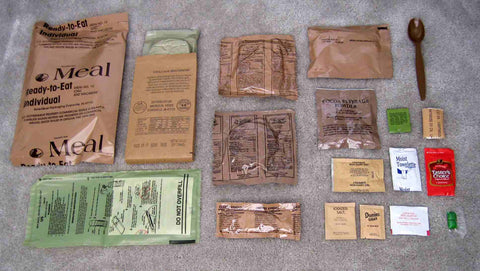
MREs are indeed very useful in our lives. We can buy one, store it in our homes, and use it during emergencies. If you are an adventurer, bringing MREs is best because you'll be prepared for whatever circumstances await you in the wild.
When buying civilian MREs, buy them from a legitimate seller. You can check their websites, product information, and past customer reviews. Some MREs have been exposed to different weather conditions and could be harmful when consumed, so be aware.
Always read the MREs' labels and know their manufacture and expiration dates. In addition, always determine the storage conditions of the MREs you wish to buy. Legit military MREs can be obtained at Army Surplus stores and gun shows.
You can also have it if you are in the military or know someone. According to MRE info, some legit civilian MRE providers are Ameriqual Apack, Meal Kit Supply, MRE Star, Sopacko Sure-Pack 12, and Wornick Eversafe.
MREs in Other Countries
1. Russian IRP
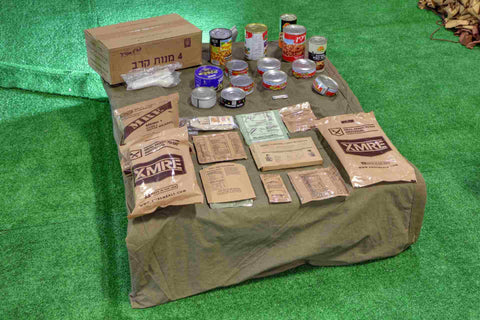
The Federation of Russia uses a ration system known as the 24-Hour Individual Food Ration or the 'Individualnovo Ratsiona Pitanee-Povsedeyn.' It consists of food that is suitable for one day. Mainly, it contains canned food and a folding stove, which is hexamine-based. The sample menu sheet of the Russian IRP is as follows:
- Assorted vegetables and canned meat. It includes rice, beef, boiled buckwheat, and barley porridge
- Can opener
- Caramel candy
- Concentrated beverage
- Crackers
- Fruit jam
- Hexamine stove
- Multivitamins
- Sugar
- Stewed beef
- Tea plus sugar
To use the Russian IRP, you must warm its contents. Prepare the boiling water using a portable heater. After use, return the parts to their initial position.
Meanwhile, the meat and canned goods can be heated or cooled. The crackers can be used as a substitute for bread. Make sure that the beverage is reconstituted before drinking. Pour the contents of the packets into a canteen cup and fill it with boiling water.
Finally, take multivitamins after breakfast. You can also consume caramel candy at any time of the day.
2. Italian Combat Rations
On the other hand, the Forze Arnate, or the Italian Armed Forces, utilize a food ration known as the 'Special Combat Food Ration' or the 'Razione Viveri Speciale de Combattimento.' Each food ration is enough for one soldier to last the entire day.
One ration weighs around 2.3 kg and measures 30 cm x 23 cm x 10.5 cm. Each bag includes three boxes for breakfast, lunch, and dinner. Unlike in some countries (like Britain, the U.S., and Canada), they use canned goods and pouches.
Italy's combat rations are available in seven' Modules menus, ' labeled from A to G. Each module has a color indicated by a sticker on the meal bag.
Moreover, each ratio in Italy includes a 'Use by date' two years after the ratio is produced. For example, if a ration was produced in December 2002, it should be used by December 2004.
Alcohol Ration
Two of the seven modules in Italy contain an alcoholic beverage. They call it 'Cordiale' or 'bevanda alcolica.' It is a 3-cl shot of a brandy-like beverage packed in a plastic bottle. This item explicitly contains no less than 70 proofs of alcohol. It must appear pale yellow amber and clear. In addition, it must smell and taste good.
3. German EPA
Meanwhile, in Germany, they use a ration system known as the 'Einmannpackung' or Individual Combat Ration, or EPA for short. Each EPA aims to provide two meals a day.
The German EPA used to have four menus: Type I, II, III, and IV. However, when the two parts of Germany reunited, they felt there was no need to stockpile food rations.
As such, they started to phase them out. After that, Germany was called for U.N. Peacekeeping duties. Then, the authorities started to revive the rations for the troops. They settled once again to have three types of EPAs.
Each EPA contains heavy-duty foil trays. It also includes Green Beans with Ham, Goulash, Italian Noodles, and Pea Soup with Bacon. Two smaller foil cans contain bread spreads, such as luncheon meat and liverwurst.
The meal box also contains gum, jam, instant fruit juice, coffee, tea, and cream. Miscellaneous items, such as water-purifying tablets and paper towels, are also included.
4. French RCIR
In France, soldiers use a ration system called the 'Ration de Combat Individuelle Rechauffable' or Combat Ration Individual Reheatable (RCIR). This system is intended to provide the nutritional needs of one soldier each day, which is around 3,200 calories.
The RCIRs are delivered in 12 boxes of the ration. Meanwhile, a single palette of RCIRs will have 20 boxes or 240 RCIRs. The French RCIR has 14 menus. Usually, it is divided into two major types:
- Menus which does not contain any pork: Numbered from 1 to 7
- Menus that contain pork: Numbered from 8 to 14
Each RCIR meal box includes two ready-cooked entrees, an appetizer, instant soup, cheese spread, crackers, an energy bar, chewing gum, a chocolate bar, caramels, and hard candies.
Furthermore, it also contains miscellaneous items such as water purifying pills, paper towels, and a reheating kit. In the past, French MREs even contained small bottles of wine.
However, since the 1990s, you can no longer find wine in the MREs. The optimal age limit for using the French RCIP is a minimum of two years. Here are also the other French rations:
- RILC: The Ration Individuelle Lyophilisee Commando, or the Freeze-dried Individual Ration Commando, is a freeze-dried ration used by special forces. It replaces canned foods.
- RIE: The Repas Individuelles d'Exercice is used by the training forces.
- Ration de Survie (Survival Ration): This is the air version of the French Survival Ration.
5. Canadian IMP
In Canada, a ration system known as the 'Individual Meal Pack' (IMP) is used. Each meal pack contains one main entrée, dessert, beverages, hard candy, and a chocolate bar.
Sometimes, the package also includes instant soup mix, instant rice, and mashed potatoes. A single IMP includes food for one person for one meal, such as breakfast, lunch, or dinner.
The main courses are packaged to be lightweight and compact. They can be eaten hot or cold. If hot, they must be placed in boiling water for five minutes.
6. British 24-Hour Ration Packs
Great Britain uses the 24-Hour Operational Ration Pack, which contains many canned goods. Its earlier version is known as G.S. for General Service.
In 1999, the G.S. rations were phased out. Then, the newer version becomes the primary operational ration pack in Great Britain. They come in several varieties, such as the Religious, G.P., Patrol, Vegetarian, and Hot or Cold Climate.
The 24-hour ration pack is an individual ration typically used in the field. It is designed to feed one person each day. Also, it contains balanced nutrition for the body.
You can eat it either hot or cold. Each ration generally provides an average of 3,800 to 4,200 calories. Finally, it contains seven menus for breakfast, snacks, main meals, sundries, and beverages.
Conclusion
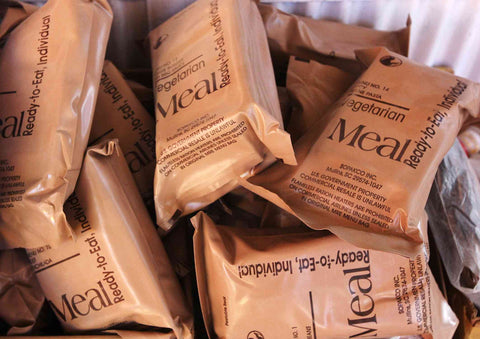
In summary, MREs are beneficial not only to the military but also to civilians. They can be used during outdoor activities such as hiking, camping, and mountaineering. They are handy, lightweight, and can fit in your backpack.
MREs are also helpful during emergencies and catastrophes. They can prevent hunger and provide the nutrients your body needs. There are various meals, and companies constantly innovate their menus to suit consumers' needs.
Find a legit seller of MREs, such as those mentioned above. Many sellers are online, but be aware of those selling expired products.
When purchasing MREs, always check the product label, including the manufacturer, expiration date, ingredients, and preparation instructions, to ensure they are safe for consumption.
Why You Should Store Food
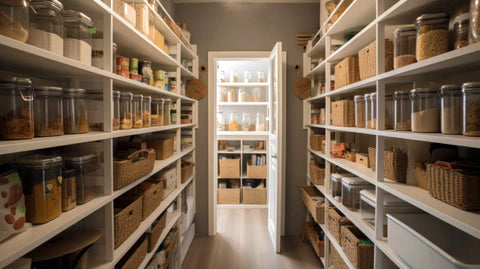
Meal prepping has become popular, especially since the world faces unexpected catastrophes. People are increasingly developing ways to prepare for the unknown.
Food is one of the top tiers of human survival. Thus, meal prepping is beyond practical. Regardless of where on the planet you are, the reasons for storing food vary.
If you live along the Southeast coast of the United States, hurricanes are a real danger. Intense hurricanes can take out power for quite a long time or more. A stock of food, and particularly water, is critical.
Food inside the fridge will spoil well before the power comes on after a strong storm. In a place like the West Coast, earthquakes can be an issue. Not only could you be left without power.
You may likewise be caught by streets that have collapsed or are covered with debris. Having a store of food and water close by is a necessity that most people don't focus on.
The U.S. government suggests that everyone and every family have an emergency food reserve, such as 72-hour emergency kits. Having an alternative food reserve could be one of the major purchases you make for yourself and your family.
This purchase can bring you inner serenity, knowing that if anything happens —whether it is a natural calamity or an act of terrorism —your family will have the supplies it needs until help is available.

